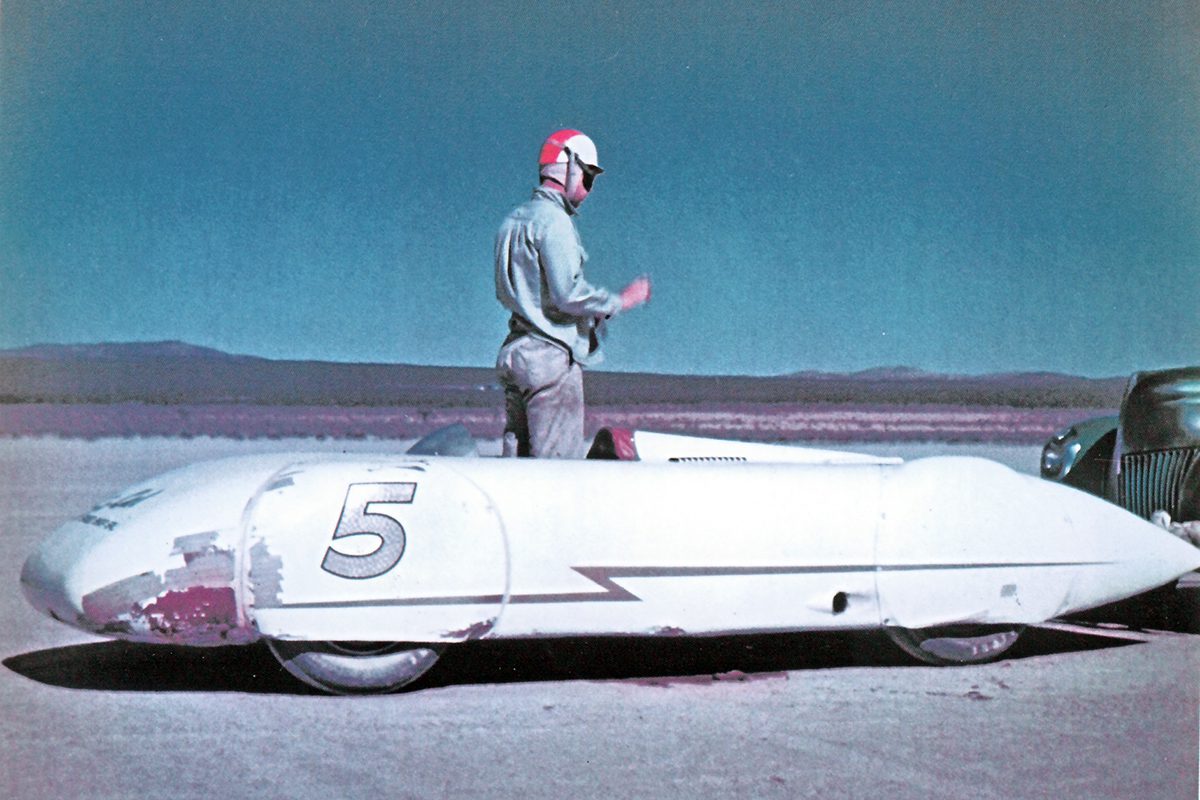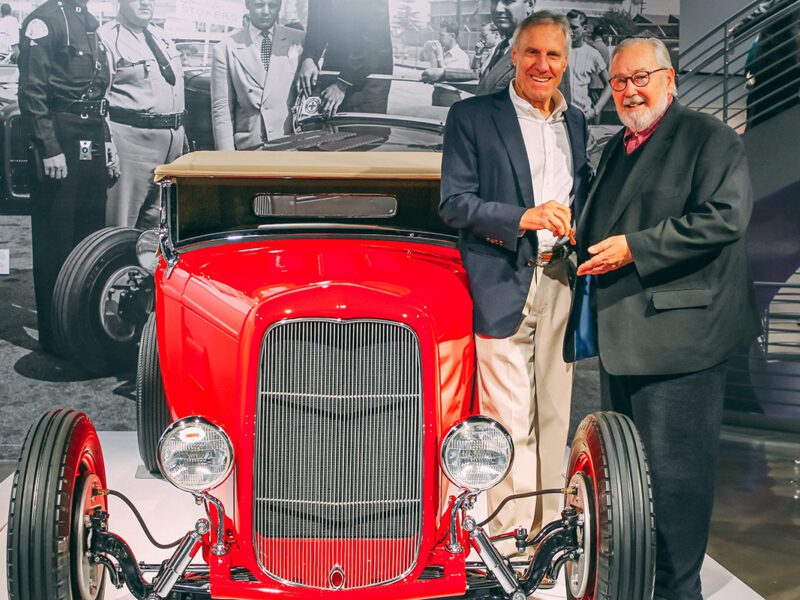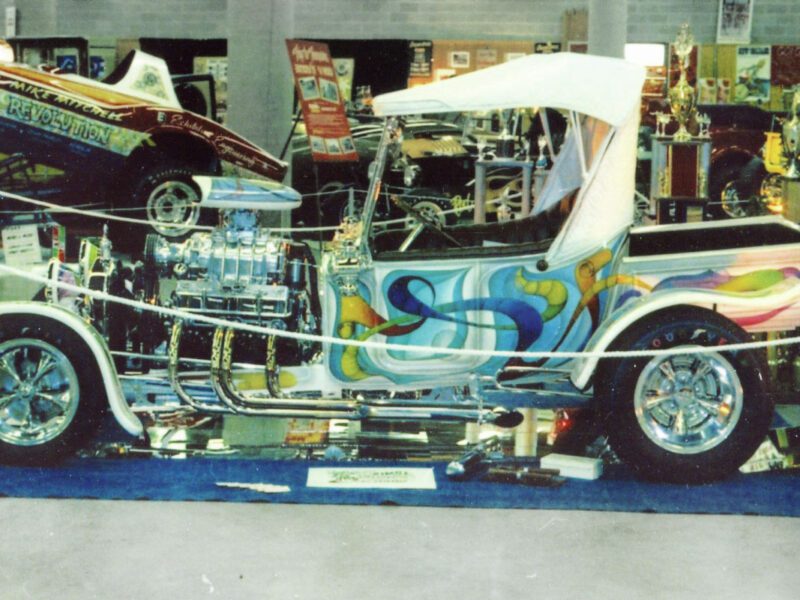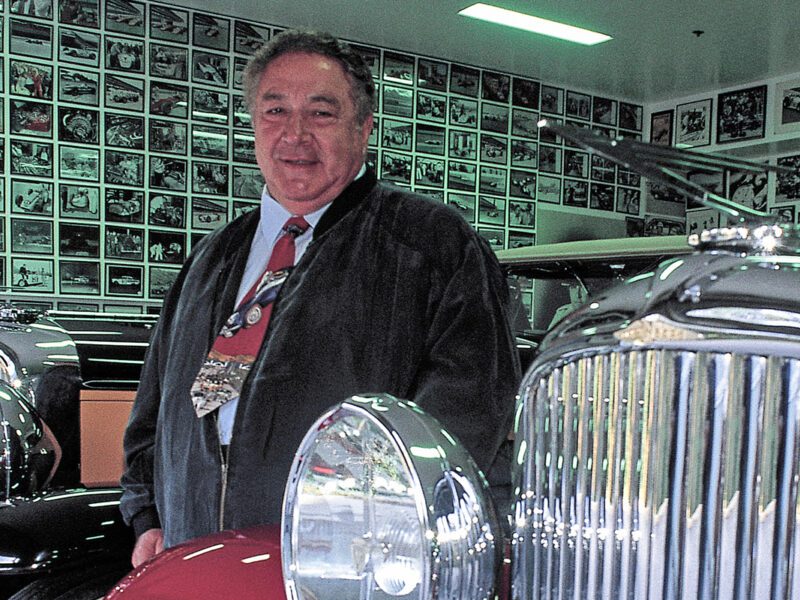Dean Batchelor – Hot Rodding’s Famed All-Purpose Journalist
Over the course of hot rod history, journalists have played an equally important role to that of car designers, engine maestros, and metal craftsmen. And no scribe was as influential as Dean Batchelor, whose given name was prescient: He was widely recognized as the dean of hot rod journalists.
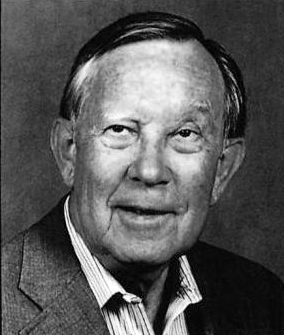 Born in Emporia, Kansas, Dean and his family moved to Southern California, where he grew up in the late 1930s and early 1940s. This pre-war period in SoCal was the petri dish for the hot-rod explosion to come. Dean frequented Muroc and El Mirage dry lakes, and he joined the Road Runners, that famous SCTA club that included luminaries Wally Parks, Ak Miller, and Vic Edelbrock.
Born in Emporia, Kansas, Dean and his family moved to Southern California, where he grew up in the late 1930s and early 1940s. This pre-war period in SoCal was the petri dish for the hot-rod explosion to come. Dean frequented Muroc and El Mirage dry lakes, and he joined the Road Runners, that famous SCTA club that included luminaries Wally Parks, Ak Miller, and Vic Edelbrock.
Then the violent maw of world war opened. Dean joined the Army Air Corp in 1942 and became a gunner and radio operator on a B-17 bomber. In July 1944, on a mission to bomb a BMW plant, flack riddled the plane, forcing a crash landing in Germany. The entire crew survived but was immediately taken prisoner – then marched 487 miles in 80 days to a prison camp. Batchelor lost 30 pounds along the way. At war’s end he and his fellow captives were rescued by the Allies.
Back home, he studied industrial design at Chouinard Institute in Los Angeles and worked in Burbank for Lockheed assembling planes. He also found time to purchase a ’32 Ford roadster. Soon the engine bay held a 1947 Mercury flathead V8 with Navarro heads, an Edelbrock intake manifold, and Clay Smith camshaft. While a daily driver, it was a weekend warrior at the dry lakes, as well.
During this time, Dean befriended Alex Xydias, who had opened SoCal Speed Shop in Burbank. Like Dean, Alex was drawn to the lakes and the dusty challenge of speeding toward triple-digit velocities. This collaboration with Xydias proved fruitful. Employing his industrial design smarts, Batchelor designed the innovative, record-setting, Flathead-powered So-Cal Special streamliner, which topped 193mph with Dean at the controls. He even survived a frightening crash when it barrel-rolled at 150mph. Apparently, he had a unique ability to escape disaster.
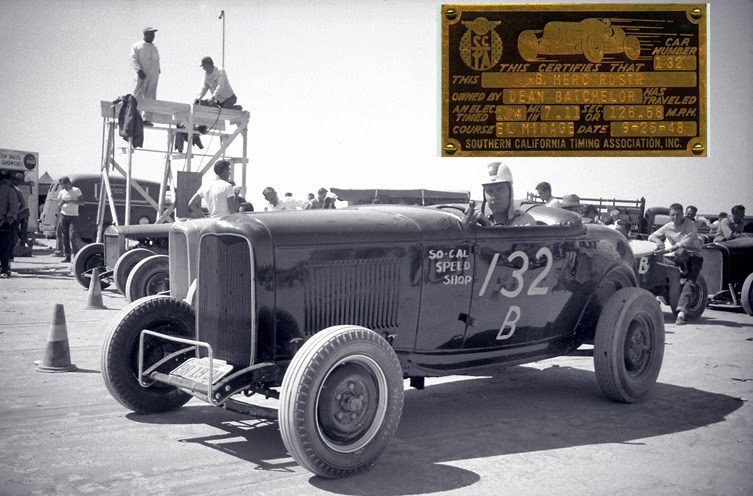 As John Lamm explained in the forward to Batchelor’s definitive history of rodding, “The American Hot Rod,” Batchelor’s knowledge of the technical aspects of the industry made him an ideal candidate to sell ads. He joined Hop Up in 1952 and Motor Life in 1956. But hustling ad space didn’t appeal to Dean. Writing did. He quickly moved to the editorial side.
As John Lamm explained in the forward to Batchelor’s definitive history of rodding, “The American Hot Rod,” Batchelor’s knowledge of the technical aspects of the industry made him an ideal candidate to sell ads. He joined Hop Up in 1952 and Motor Life in 1956. But hustling ad space didn’t appeal to Dean. Writing did. He quickly moved to the editorial side.
But the sales-to-writing wasn’t the only transition Batchelor was undergoing. He was also becoming increasingly interested in European sports cars as well, with a special predilection for the Prancing Horse of Ferrari. He joined the staff at Road & Track in 1958 and later became editor.
After leaving R&T in 1975, Dean took a position with Harrah’s auto museum in Reno, Nevada, where he wrote a comprehensive book on the collection. He also penned books on Ferrari and Porsche before embarking on a detailed history of Briggs Cunningham, “The Life and Cars of Briggs Cunningham.” This long drawn-out project showcased Batchelor’s commitment to accuracy and thoroughness.
Xydias was a close friend of Batchelor – Dean was his second-ever customer at SoCal Speed. He attributes Batchelor’s success to attention to detail. “He was a true perfectionist,” Alex explained recently to Goodguys. “If you ever quoted one of his books about a technical detail, you could guarantee it was correct. He took what he did very seriously and made sure he had everything covered.”
 The contributions by Dean Batchelor to automotive journalism are recognized annually by the Motor Press Guild, which created the annual Dean Batchelor Award for Excellence in Journalism. Moreover, the trophy for best hot rod at the Pebble Beach Concours is also named after Dean.
The contributions by Dean Batchelor to automotive journalism are recognized annually by the Motor Press Guild, which created the annual Dean Batchelor Award for Excellence in Journalism. Moreover, the trophy for best hot rod at the Pebble Beach Concours is also named after Dean.
Batchelor died of a sudden heart attack in 1994, but not before he finished his magnum opus on hot rodding, the aforementioned “The American Hot Rod.” The book chronicles rodding from its pre-war infancy through the 1950s and early 1960s, with hundreds of rare images and Bachelor’s unerring prose. Any hot rodder worth his or salt – pun intended – should have this essential volume on the shelf.
Lamm, a fellow R&T staffer with Batchelor, had a unique perspective on the man. His closing words in American Hot Rod sum it all up: “It is an accepted fact that the men who established American’s road racing power, influenced Indy cars, and designed and engineered many of America’s production cars had their beginnings in the hot rod movement of Southern California.”
“Dean Batchelor knew it all along.”

